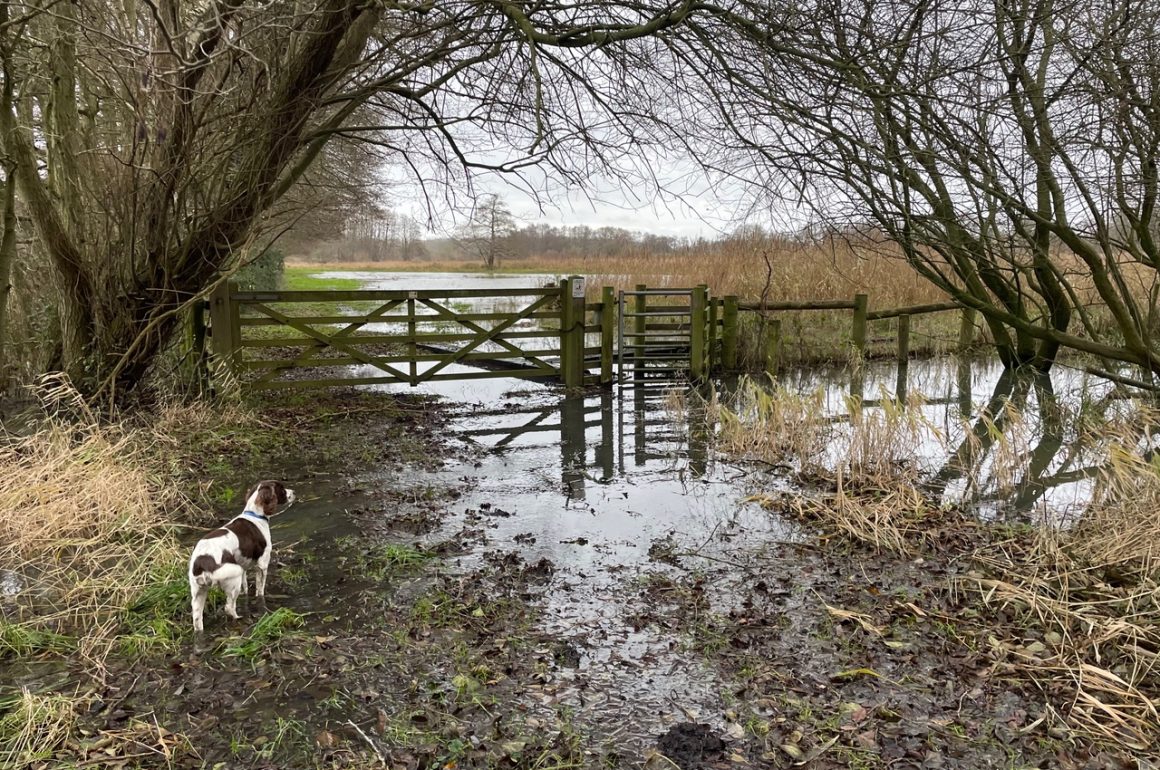
Some years ago there was heated discussion in the birding world as to whether the RSPB should continue to let dog walkers use the path adjoining its reserve at Titchwell. (Titchwell, on the North Norfolk coast, is the most visited RSPB reserve in Britain). It was a lively debate, with the anti-dog argument the most persuasive. Ironically, it was an academic discussion. The track to the coast bordering Titchwell is a public footpath, which means under British law that anyone can walk along the path, and a dog or even dogs can also accompany them as long as they are under control.
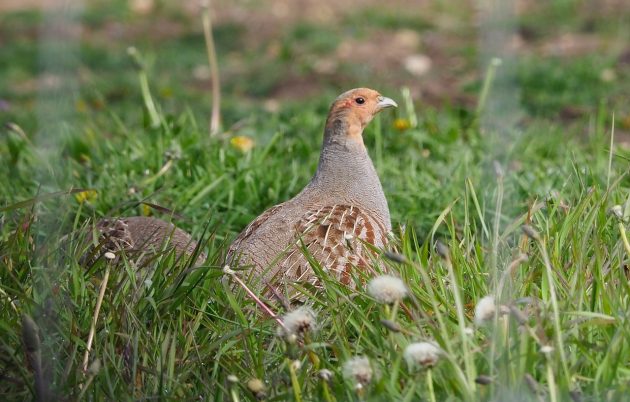
Ground-nesting birds, like these Grey Partridges, are highly vulnerable to disturbance from loose or uncontrolled dogs
I’ve always been passionate about birds, while I have also shared most of my life with dogs, so I feel strongly that the two are compatible. There’s a very strong possibility that you have a dog, too. In the UK more than a quarter of all households have one, and that percentage rises when people have an interest in wildlife and the environment. Dogs and birdwatching aren’t mutually exclusive by a long way, and I take binoculars with me on every dog walk.
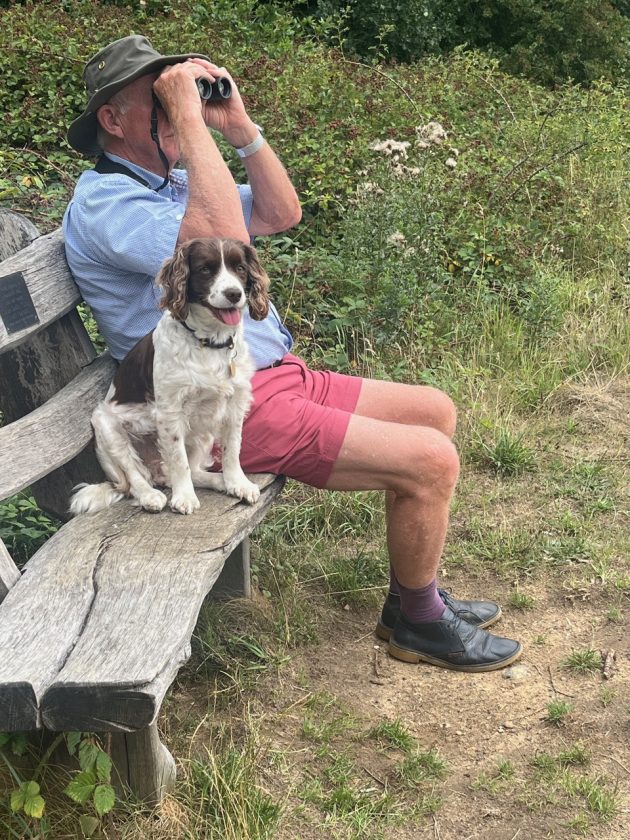
Emma the birdwatching dog
My pre-breakfast dog walk is invariably on my local patch. There’s a long-distance footpath I can join from a gate in my back garden, and it takes me through arable fields down to my local nature reserve, a tree-fringed valley fen with an extensive reedbed. Here there’s a bench that I can sit on and watch birds, for the bench has a commanding view over the fen. If I sit and watch, as I often do, then Emma my spaniel will sit and do the same. She never goes to sleep, but aways observes what is going on.
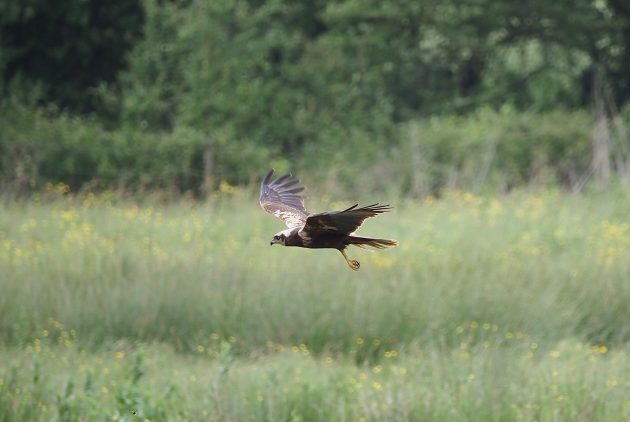
Female Marsh Harrier over the fen
In the spring I will often sit for 20 minutes or longer, recording and observing the birds. It’s a great site for warblers, with Chiffchaff, Blackcap, Reed, Sedge and Grasshopper Warblers all breeding birds, while I also record Whitethroat, Lesser Whitethroat and Garden Warbler most years. Marsh Harriers I see regularly – they bred in 2024, though not this year. Over the last five years I have recorded nearly 100 species of birds in and around the fen, almost all of which I have seen while accompanied by Emma.
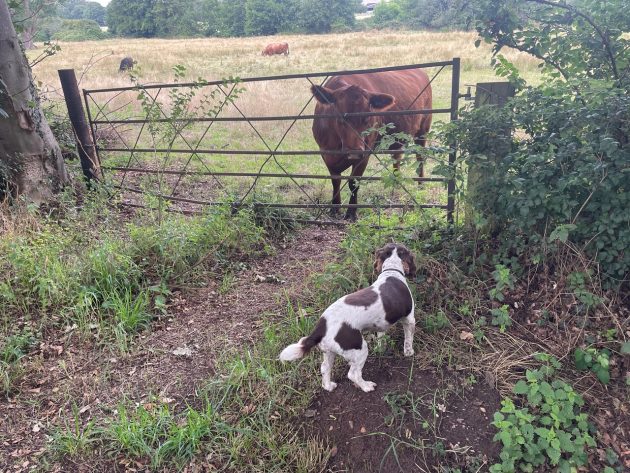
Bovine encounter: birdwatching dogs must be accustomed to livestock
I should explain that I have always had spaniels, perhaps the most bird-orientated of all dogs. I kept and bred English springer spaniels for 40 years; Emma is a break from tradition, as she is a a sprocker (English springer x cocker). She acquired her name because I heard about her birth while I was away birding in Southern Spain in March 2018. A storm called Emma had just ripped through the area, depositing 10 inches of rain in just a few days.
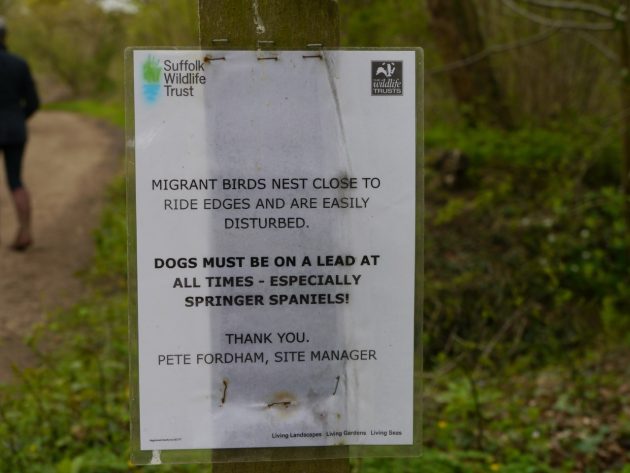
Rules must be obeyed
Generations of spaniels have been bred to hunt and flush game, and such behaviour is hard-wired into their genes. Stopping or even curtailing it can be difficult, especially for dogs that rarely encounter the intoxicating smell of game. With most dogs it’s their noses that lead them astray in the first place. A dog’s sense of smell is around 3,000 times more sensitive than ours, and they will know if a Pheasant or deer has just crossed the path in front of you, even if you didn’t see it yourself.
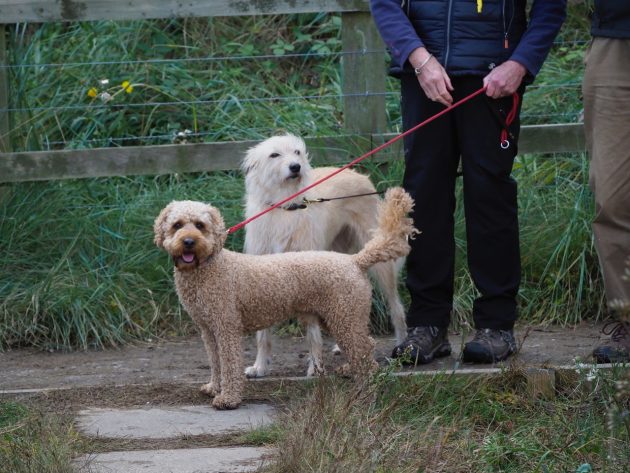
If you own, for example, a French bulldog or a Dalmatian, then the chances are it will take little or no interest in wildlife, and in many ways these sort of dogs are the ideal birdwatching companions, as they walk happily to heel and don’t disturb anything. However, the hunting instinct is a strong feature of all the gundog breeds, be they pointers, retrievers or spaniels. Cockerpoos are also pretty keen, reflecting their cocker ancestry. If you want to take any of these dogs birdwatching, you have two choices: keep them on a lead at all times, or train them to walk to heel, and ignore birds or animals. They must come back instantly to the whistle. Emma was the easiest to train of all my spaniels: she likes to stay close to me, not a trait common to many spaniels. She is a genuinely good birdwatcher’s dog. Though I always walk with both a lead and whistle, I rarely need to use either.
Emma is also unusual in that she doesn’t need constant attention. Many dogs will sense the fact that your attention is diverted, perhaps by an interesting bird, and they will misbehave accordingly. It’s the hands off the steering wheel syndrome, invariably leading to a crash. It’s not unusual for me to think that I have lost Emma, only to find her right behind me.
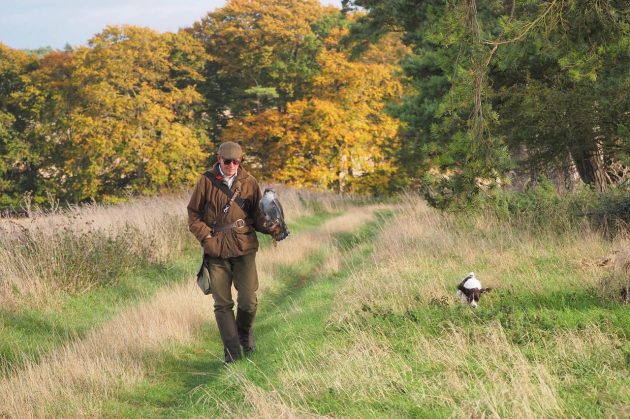
Emma on a hawking outing, working with a Goshawk
The discipline of gundog training is undoubtedly hugely beneficial to any of the gundog breeds, even if the last thing you ever want to do is take them shooting. Training takes hard work, lots of repetition and patience, but it pays off in the long run, making your dog a much more acceptable all-round companion. The basics are sitting and staying, walking to heel and instant recall. Introducing a birdwatching dog to farm livestock is also essential. Emma was trained from an early age to ignore all livestock, whether chickens, sheep or cattle. She encounters deer daily, but has never been interested in them.
Dogs and children have a great deal in common. If they are well behaved nobody objects to them and most people like them, but ill-behaved individuals can be a nightmare. One of the essential requirements for the birdwatcher’s dog is to sit quietly and unobtrusively. Emma has been taught to sit, and to stay sitting, as soon as I stop walking. This means that if she is on a lead, I can drop it and use my binoculars freely. Trying to use binoculars and at the same time restrain a pulling dog is impossible.
The dog-walking birdwatcher has a number of responsibilities that must always be observed. Always clearing up after your dog is so obvious it hardly warrants mentioning, while keeping your dog on a lead where instructed to do so is also essential. Calling your dog to heel when encountering other people, or other birdwatchers, is also a common courtesy. Emma’s main fault is that she likes to greet people, and not everyone welcomes such attention.
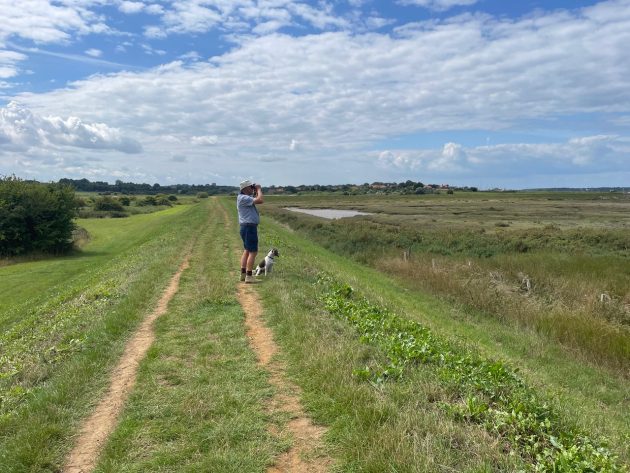
Birding with Emma on the North Norfolk coastal path
There are, of course, a number of compromises when combining dog walking with birdwatching. I rarely take a telescope and a dog, as they don’t make a good combination. Compact, lightweight binoculars are also essential. If your binoculars are too big and heavy, you’re be more inclined to leave them at home. Many bird reserves are strictly out of bounds, as dogs aren’t allowed, but do your research beforehand and you will find that there are a surprising number of reserves bounded or crossed by public footpaths. If your dog is well disciplined there’s no good reason why you shouldn’t enjoy its company when out birding.
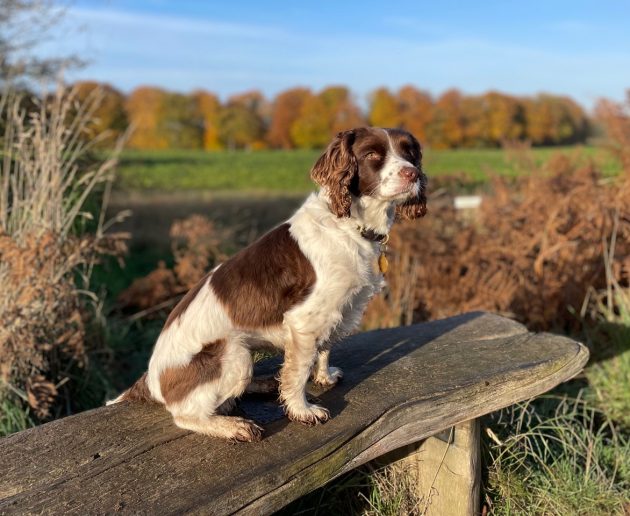


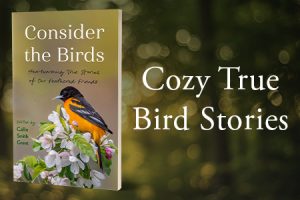

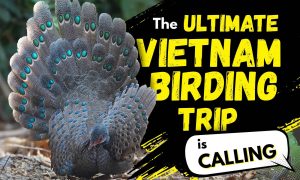
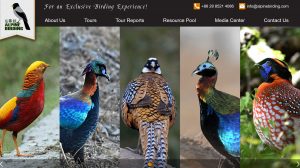
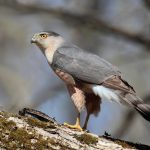
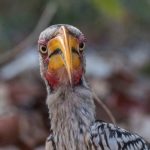
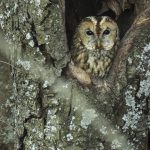
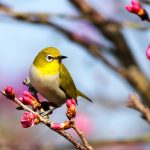


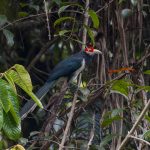
Birds and dogs in one post – it doesn’t get better than that. I fully agree with all David’s advice. While it seems more essential for birding, I’d say every dog needs to be thoroughly trained. A trained dog is a happy dog. I have introduced my toy poodle (yes, I know) to livestock, all shapes and sizes of people (you do not want a racist dog!), public transport, planes and of course, birding. She’s actually better off lead when birding, but that maybe because she is afraid of the fighting bulls here in Portugal. That is a fear I did not have to train. As David says, her nose is superior and she will often find little carnivores (otter, mongoose, fox) or wild boar for me. Watching the pictures I decided to go for an extra walk…
This was so interesting and combining two wonderful things: birds and dogs/walking. Learned a bit too which is always so enriching! Lovely photos and I hope to get up to Norfolk one of these days on my next visit to the UK.
Having mobility issues and birding by car I remember taking my Miniature Schnauzer riding shotgun and opening his door whenever I stopped to look for birds. Most of the time, he’d stay in the car, but here and there, he’d get out to sniff the grass nearby. And so, on that particular occasion in the Danube Backwaters, he went out, I started observing and realised that there are no less than 8 White-tailed Eagles within the 200 metres diameter. And the Miniature Schnauzer could be seen as the right-sized prey!
This is such a well-written and much needed post. May I also say that it is somewhat English-centric. I have been to Titchwell, in 2010, and I loved the photos in this post. Along with Minsmere and Ramsey Island (Wales), this was one of my favorite places. I will also say that, despite looking hard, we did not see Gray Partridges.
I say English-centric because of the way that dogs fit into English life. Relatively peacefully is another way to describe it. For a variety of reasons, I have not had a dog since 2009, but I had that dog for 17 years. Reading how David discussed the behavior of his dog, Emma, bought back memories of my well-behaved dog. I am not sure that a dog on the loose in birding habitat in the US would fly amongst birders. However, there were places where I could allow my dog to be free and go birding at the same time. If I stopped to see something, she would stop and wait for me. That was a long time ago – in the days when I had a dog, and did a lot more home range birding. Nowadays, in the US (and I might be scolded for writing this), people with or without dogs, just do whatever it is they want to do. In my favorite birding spot near my home, there is a sign – too small for my liking – that nevertheless clearly states “no bicycles” on the nature trail. People still ride their bikes on the nature trail. This, despite the fact, that most of this very large park is tailor-made for cycling. Don’t even think of pointing out that bikes are not allowed on the nature trail. You might receive an unpleasant earful in return. Even though there are leash laws in this park, walking dogs without a leash is also not uncommon. For my part, I’ll take an unleashed dog over a bicycle. But, I digress. As I was reading and agreeing with David’s insightful and well-thought out post about birding with his dog (it’s obvious she is great company on such outings; my dog was too), I felt sadness because in the US, the days when people were more observant and rules-bound are probably long gone and, dare I say, unlikely to return. I recall one episode, where I watchied a guy stand by as his bulldog eliminated (is this the polite word?) just at the edge of the nature trail. After his unleashed dog finished I asked if he was going to pick up the poop. His response was something like, “Nah” and he and his dog continued walking. I shouldn’t be airing the US’s dirty laundry on an international site, but I suspect that what I have written, especially in our current situation, is unlikely to surprise anyone.